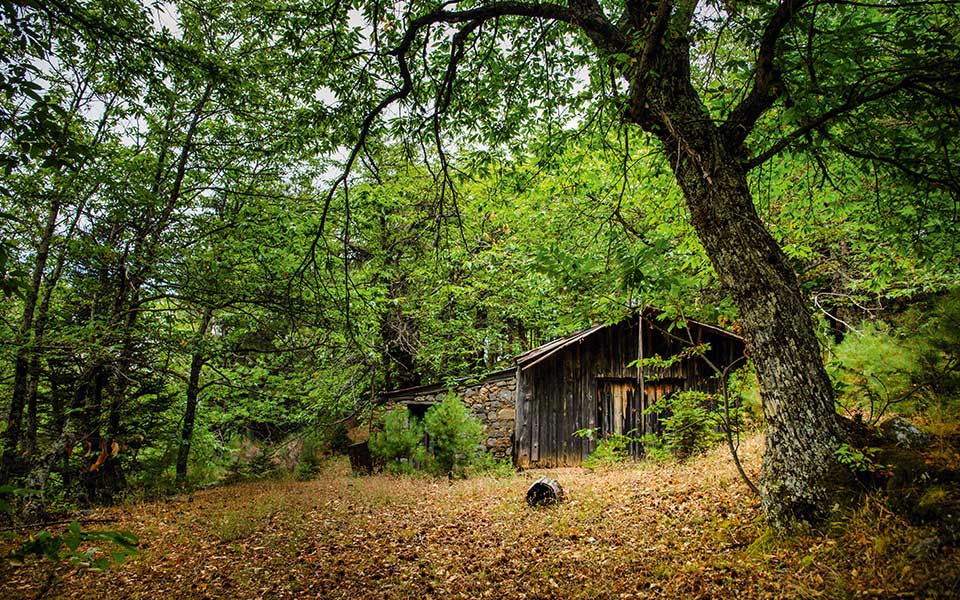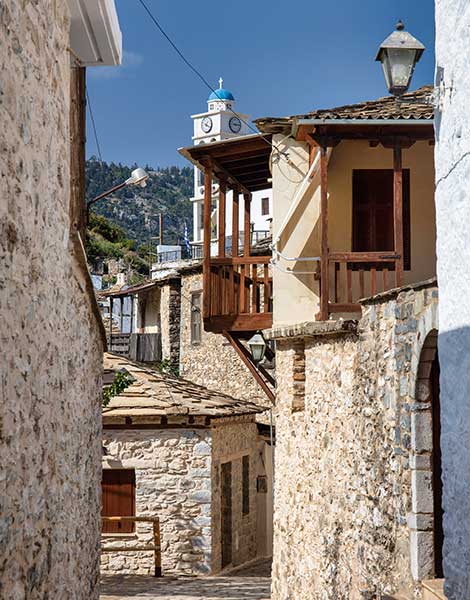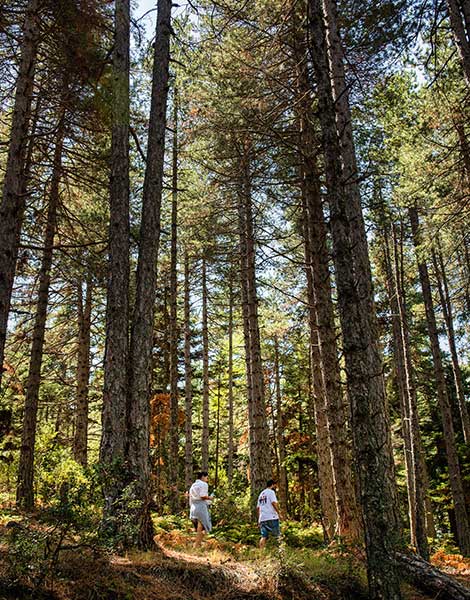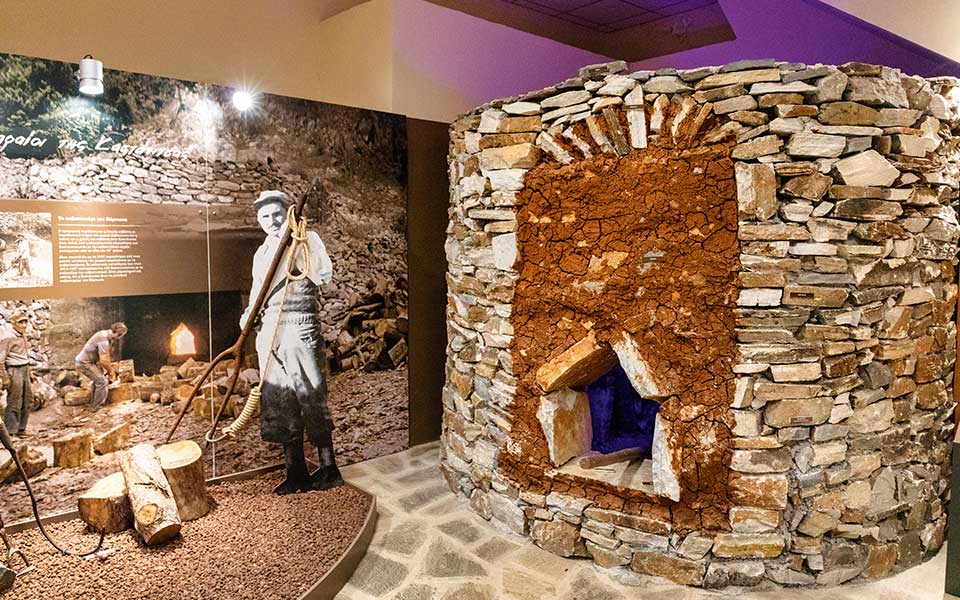“No matter how many you’ve eaten, you must try mine!” insists a local woman behind her stall in Kastanitsa’s square, urging me to eat the twentieth chestnut of the day, as if it will be different from the previous nineteen. This will happen often if you visit Kastanitsa during harvest season in autumn, as the local producers take great delight in their produce, and they each own chestnut trees in the beautiful woodlands that surround the village.

© Perikles Merakos
The chestnut orchards are privately owned by approximately 50 producers, with only six heavily involved in chestnut production. “A total of 1,100 acres are cultivated, but last year they only yielded 14 tons of chestnuts. We used to gather 850 tons, but now the trees are plagued by four different diseases. We hope the situation can be reversed,” says Dimitris Antoniou, a chestnut grower and president of the Northern Kynouria Agricultural Association.
The village is named after the chestnut, and for the past 40 years, the Chestnut Festival has been held on the last weekend of October to celebrate them.

© Perikles Merakos

© Perikles Merakos
During the festival, Kastanitsa is brimming with visitors who sample local recipes and chestnuts in all forms from the vendors’ stalls – boiled, roasted, in jams, coated in chocolate, chestnut paste, and even savory dishes like pork or chickpeas baked with chestnuts. Another local dish, “kaminiariko,” a blend of beans and pasta, is also intriguing despite the lack of chestnuts. The festival also includes live folk music, Tsakonian dances, and talks about the Tsakonian language, because Kastanitsa isn’t just about chestnuts; it’s also one of the Tsakonian villages of Kynouria – arguably the most beautiful one.

© Perikles Merakos
It is perched on the pass connecting two hills, with charming and well-kept whitewashed alleyways adorned with bougainvillea, basil plants, and small trees that add color to the white walls or stone of the tower houses with their slate roofs – some are in ruins, while others have been restored. After leaving your car at the village entrance, you will begin your walk, which will inevitably lead to the castle, known as the Tower of Kapsabelis, which defended the area during Byzantine times.
The tower is in ruins, but the walk and view of the village are stunning. After that, you can visit the Kastanitsa Environmental Information Center to learn about the Tsakonians and their customs, Mount Parnon’s rich natural beauty, and the lime kilns, as the village was famous for lime production in the twentieth century. From there, you can choose from a variety of hiking trails, ranging from 30 minutes to 5 hours, through chestnut and fir forests.
Kastanitsa is 188 km (about 3 hours) from Athens.












